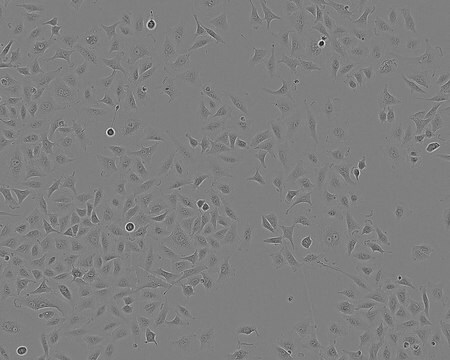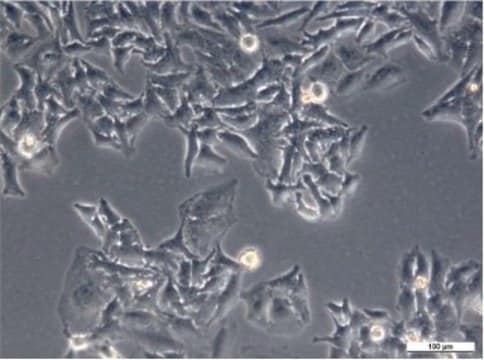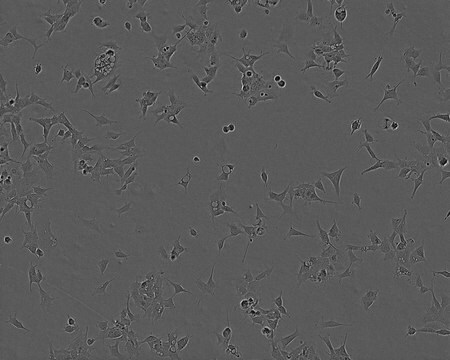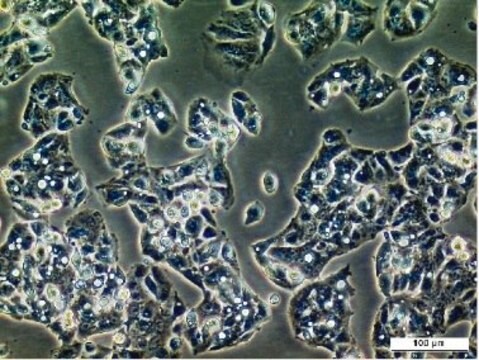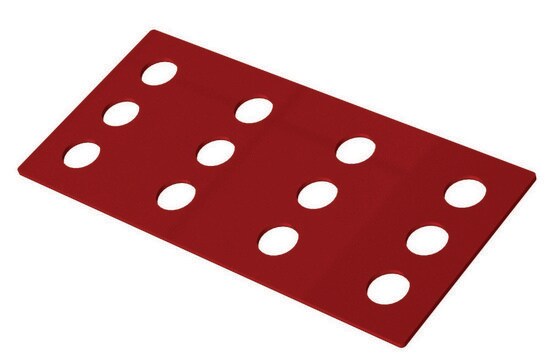K562 Cell line human
89121407, from human blood(chronic myelogenous leukemia)
Synonym(s):
K-562 Cells
Sign Into View Organizational & Contract Pricing
All Photos(1)
About This Item
UNSPSC Code:
41106514
Recommended Products
biological source
human blood (chronic myelogenous leukemia)
growth mode
Suspension
karyotype
2n = 46
morphology
Lymphoblast
products
Not specified
receptors
Not specified
technique(s)
cell culture | mammalian: suitable
relevant disease(s)
cancer
shipped in
dry ice
storage temp.
−196°C
Related Categories
Cell Line Origin
Human Caucasian chronic myelogenous leukaemia
Cell Line Description
Established from pleural effusion of 53 year old female with chronic myelogenous leukaemia in terminal blast crisis. Population highly undifferentiated and of the granulocytic series. Can be used as a highly sensitive target for the in vitro natural killer assay. Recent studies have shown the K562 blasts are multipotential, hematopoietic malignant cells that spontaneously differentiate into recognisable progenitors of the erythrocyte, granulocyte and monocytic series.
Application
K562 cell line has been used to study the protecting role of cluster of differentiation-39 (CD39) attenuation against DNA damage. It has also been used to study the relevance of a novel sorting approach for separating cells, called “Slice and Dice Sorting”.
Natural killer assay and tumourigenicity studies
DNA Profile
STR-PCR Data: Amelogenin: X
CSF1PO: 9,10
D13S317: 8
D16S539: 11,12
D5S818: 11,12
D7S820: 9,11
THO1: 9.3
TPOX: 8,9
vWA: 16
CSF1PO: 9,10
D13S317: 8
D16S539: 11,12
D5S818: 11,12
D7S820: 9,11
THO1: 9.3
TPOX: 8,9
vWA: 16
Culture Medium
RPMI 1640 + 2mM Glutamine + 10% Foetal Bovine Serum (FBS).
Subculture Routine
Maintain cultures between 100,000 to 1,000,000 cells/ml; 5% CO2; 37°C.
Other Notes
Additional freight & handling charges may be applicable for Asia-Pacific shipments. Please check with your local Customer Service representative for more information.
Certificates of Analysis (COA)
Search for Certificates of Analysis (COA) by entering the products Lot/Batch Number. Lot and Batch Numbers can be found on a product’s label following the words ‘Lot’ or ‘Batch’.
Already Own This Product?
Find documentation for the products that you have recently purchased in the Document Library.
Our team of scientists has experience in all areas of research including Life Science, Material Science, Chemical Synthesis, Chromatography, Analytical and many others.
Contact Technical Service

